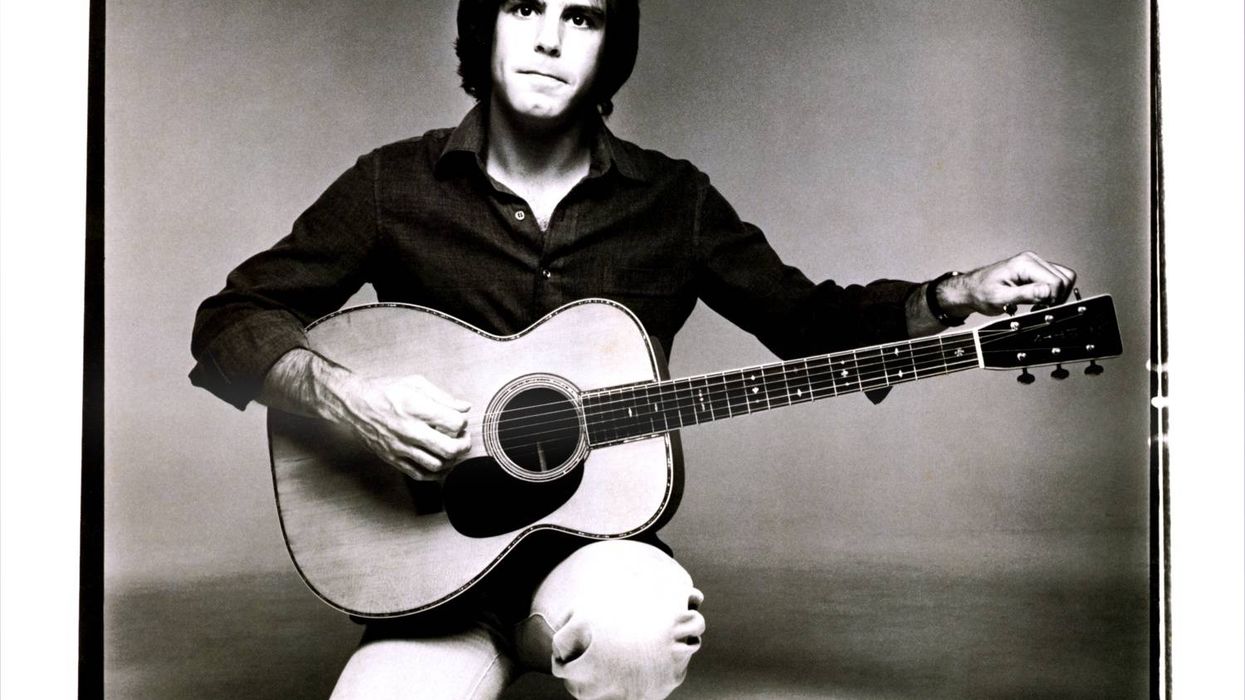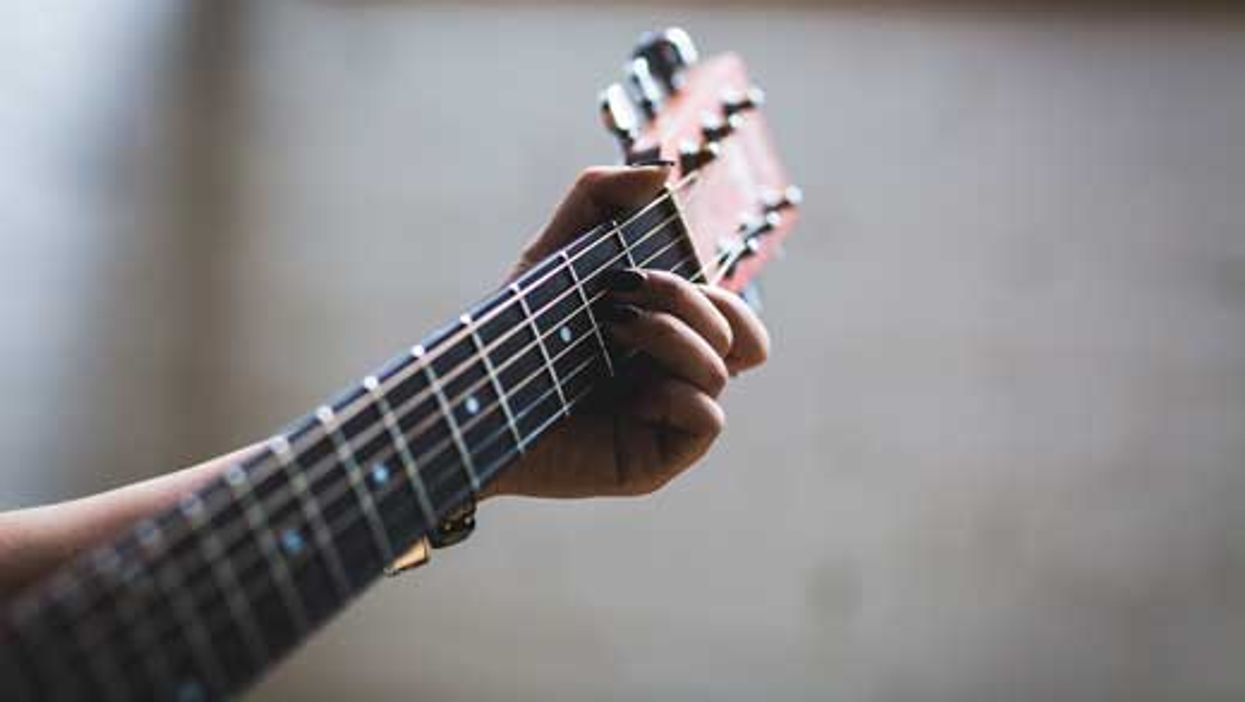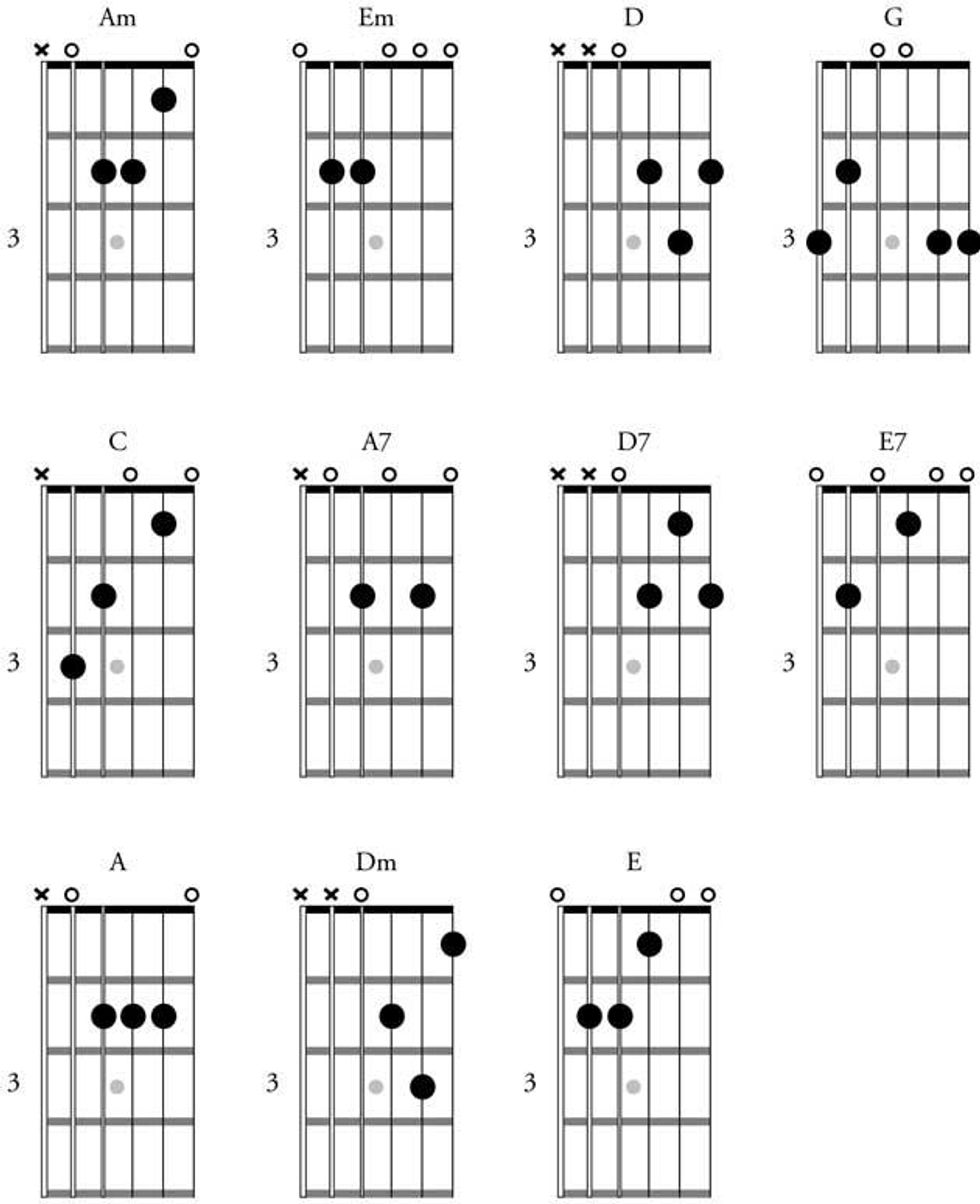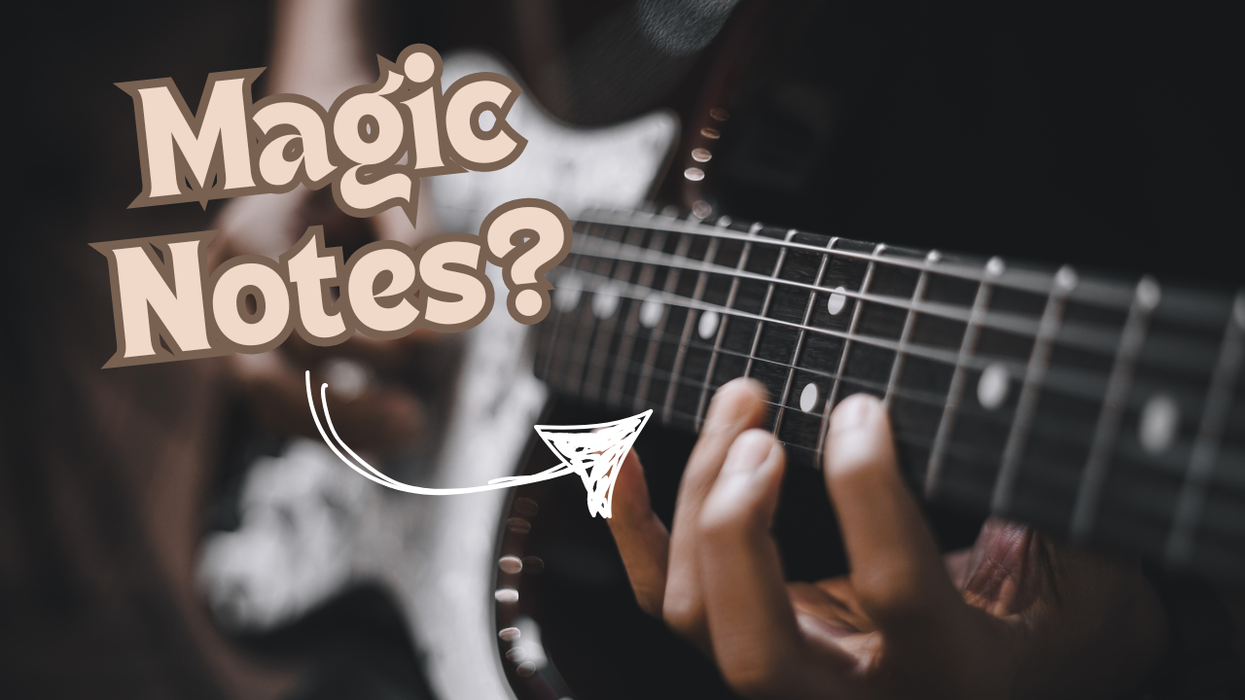Chops: Advanced
Theory: Intermediate
Lesson Overview:
• Understand how Holdsworth approached extended harmony and cluster-style voicings.
• Learn how to use the “drop voicing” system.
• Improve your legato technique.
Click here to download a printable PDF of this lesson's notation.
Allan Holdsworth had one of the most distinctly original voices of any guitarist. While some aspects of his music and style have been assimilated by admiring musicians, many facets of his playing remain shrouded in mystery. Much has been written about Holdsworth’s legato technique, speed, and tone, and many guitarists, particularly in the rock and metal worlds, have embraced and absorbed these elements of his sound. However, Holdsworth’s innovation extended beyond his virtuosic guitar technique. His deep harmonic language, exemplified by his chord voicings and compositions, as well as his unique approach to melodic improvisation, have not been so readily imitated. The speed of Holdsworth’s single-note soloing and the density of his chord voicings pose a daunting challenge to anyone attempting to learn his music, and with so few transcriptions available, and even fewer accurate ones, his music has unfortunately been placed out of reach of many aspiring musicians. In this lesson, I want to explore essential elements of Holdsworth’s harmonic and melodic style and demystify some of his musical concepts.
A thorough analysis of Holdsworth’s playing could easily fill volumes, so the examples in this lesson only scratch the surface of his rich musical language. Because much has already been written about Holdsworth’s legato technique, I’ll skip discussing that in detail in favor of looking at the notes Holdsworth played with his extraordinary chops. First, let’s first investigate his chord voicings.
Although there are certainly some finger-busting chords in his music, most of Holdsworth’s voicings are four-note chords that follow the “drop voicing” system. Such voicings are quite common, not only on guitar, but also on piano and as harmony for horn sections. Before we investigate drop voicings, look at the closed voicing in Ex. 1. Simply put, a closed voicing is when the notes are placed as closely as possible to each other within an octave. This Fmaj7 voicing is quite comfortable under the fingers, but most closed voicings on guitar are extremely stretchy and often very difficult—if not impossible—to play. There are some exceptions and that’s where Holdsworth focused.
Now let’s next take our closed Fmaj7 voicing and create some drop voicings. There are a total of five types of drop voicings: drop 2, drop 3, drop 2+4, drop 2+3, and drop 3, double drop 2. Each of these are named for how they differ from a closed voicing. For a drop 2 voicing, we start with our closed Fmaj7 voicing and drop the second note from the top (C) down an octave (Ex. 2). Since the 5 is the lowest note, this creates a 2nd inversion Fmaj7.
If we want to return to root position, but keep the spacing of the drop 2 voicing, we’ll need to invert the voicing. To invert a voicing, move each voice to the next chord tone. Ex. 3 shows an Fmaj7 chord in root position. I needed to move each note from Ex. 2 up twice to make a root-position chord. Follow the same process of dropping the specified note or notes down an octave, then invert if necessary for the other chord types.
Ex. 4 demonstrates the remaining drop voicings in root position for Fmaj7. One note about the last voicing (drop 3, double drop 2): This name refers to dropping the third note from the top one octave, and then dropping the second note from the top down two octaves, hence “double drop.” This last type is often quite stretchy on guitar, but they also sound very unusual and were one of Holdsworth’s favorites.
Another technique for generating Holdsworth-style voicings is to take one note of a seventh chord and move it up or down within the key. Ex. 5 takes our familiar Fmaj7 chord and changes it to an Fmaj13 and finally a C/F. These voicings often contain beautifully dissonant seconds within the shape. A byproduct of this process is that many voicings become difficult to name because not every note in a typical chord is present. The Fmaj9 chord is technically an Fmaj9(no 3), but rather than fretting about extremely precise chord symbols for ambiguous voicings, it can be more beneficial to go with a chord symbol that points clearly to the bigger picture of the overall tonality.
Ex. 6 is an étude written in the style of many Holdsworth compositions. There’s a mixture of closed and drop voicings, nearly all of which involve moving notes around in the scale to create more clustered, dissonant voicings. Holdsworth was a fan of not only using seconds in his voicings, but also minor ninths (check out measures 6, 7, and 9). One final note about Holdsworth’s chords: Holdsworth typically played chords fingerstyle, with his pick held under his curled right-hand index finger. Due to the skipped strings in many voicings, strumming these chords with a pick creates many problems with unwanted open strings, so a fingerstyle approach is recommended.
Click here for Ex. 6
The other side of Holdsworth’s musical persona is his liquid solo lines full of ear-catching chromaticism and angular leaps. Without getting into the topic of technique too much, it’s worth noting that playing in Holdsworth’s legato style requires a very light touch for both the fretting and picking hands. Holdsworth’s lines have intense energy, yet to obtain the speed and fluidity required to play them, you need to keep the hands very relaxed and graceful.
The next few examples are essentially demonstrations of how Holdsworth organized scales on the fretboard. Many guitarists study 3-note-per-string and even 4-note-per-string scales in the quest to understand Holdsworth’s style, but scale patterns alone won’t unlock the secrets to his lines. Although Holdsworth did frequently use wider stretches, he also incorporated string skipping and position shifting to create more interesting lines. Ex. 7 is based on the G major scale (G–A–B–C–D–E–F#) and uses a standard 3-note-per-string pattern, but instead of simply ascending straight up the scale, every other string in the pattern is skipped. You will notice that the notes on the 2nd string of the example begin on D, and not E, which would be the typical note that 3-note-per-string pattern would start on. This change was done to create symmetry with the 3-5-7 fret pattern of the 6th string. Holdsworth frequently took advantage of guitar fretboard symmetries, and we’ll see more examples of this in a moment.
Click here for Ex. 7
Ex. 8 contains two phrases that use the A minor pentatonic scale (A–C–D–E–G). However, rather than playing only two notes per string, this pattern uses three notes on each string. It creates a repeated unison note at each string crossing. Unisons across the strings is a device Holdsworth frequently used, which is an emulation of the repeated notes a saxophonist can get with alternate fingerings. Saxophonists John Coltrane and Michael Brecker frequently used this device in their playing. The second phrase incorporates skipped strings to the 3-note-per-string pentatonic pattern. The unisons are now gone, but it’s not quite the complete scale, either. The string jumps cause one note to be skipped over at each string crossing, creating much wider intervals and breaking up the predictability of running straight up a complete scale.
Click here for Ex. 8
Ex. 9 takes the idea of larger stretches and string skipping from the previous example and applies it to the D half-whole diminished scale (D–Eb–F–F#–G#–A–B–C). We start on D, but skip a few notes within the scale to preserve a symmetrical feel. This alternating pattern of larger leaps with notes only half-steps apart again creates a far more interesting pattern than simply playing the complete scale ascending and descending. It’s worth noting that because of the diminished scale’s minor third symmetry, this lick can be moved up and down the fretboard with jumps of three frets. An example of Holdsworth playing a similar lick this way can be heard in the Joe Henderson song “Isotope,” on the 1996 album None Too Soon.
Click here for Ex. 9
Most guitarists have “pet” phrases that they use from time to time, and Holdsworth was no different. Ex. 10 is something he would frequently play as a pickup to a new phrase. The lick is made up of ascending perfect fourths, again using unison notes across neighboring strings.
Click here for Ex. 10
The G major pentatonic scale (G–A–B–D–E) is a rather easy scale for even novice guitarists, but Holdsworth creates a more linear fingering for Ex. 11. Pay attention to which notes contain slides so you don’t run out of fingers as the lick moves up the neck.
Click here for Ex. 11
Ex. 12 is another lick that Holdsworth frequently used as part of larger phrases. He’d typically play this lick on either a Cm or Fm chord. It’s mostly diatonic to either the C minor or F minor scales, but contains a chromatic moving line.
Click here for Ex. 12
It’s easy to spot the symmetrical elements of Ex. 13. This lick is very chromatic and doesn’t belong to any particular scale or tonality. It would typically be used to create tension against the song’s harmony, and would be followed by a resolution to something back within the key. Holdsworth’s lines frequently depart from the tonalities of the song as a way of creating tension, but they always land back within the key at beginnings of measures or at the change to a new chord.
Click here for Ex. 13
On the topic of resolution, it’s critical that you practice these licks with resolutions. One aspect of Holdsworth’s playing that sets him apart from other guitarists is that his lines are always connected to the chord changes of the song. No matter how wild a solo line may be, it always lands on a logical note when the harmony changes. If you only work on licks like these in isolation (especially ones that are based on fretboard patterns), you’ll find it difficult to weave the lick into the context of a song. Be sure to always include the landing note at the end of any lick as part of the line.
Ex. 14 is a solo étude written over the changes to our earlier chord etude (Ex. 5). I’ve employed a variety of techniques discussed so far: string skipping, cross-string unisons, three-note-per-string pentatonics, diminished scale sequences, and lines using shifts up and down one string.


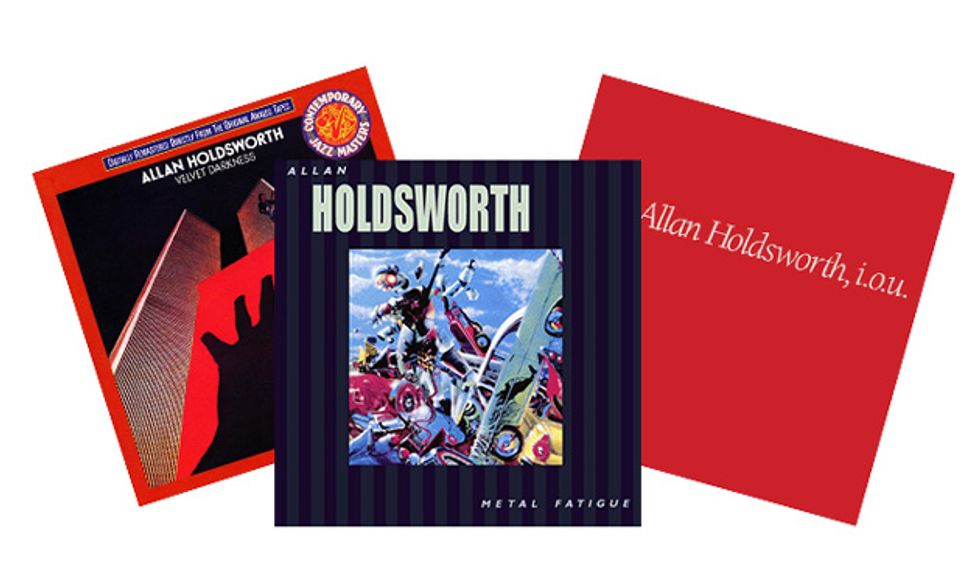

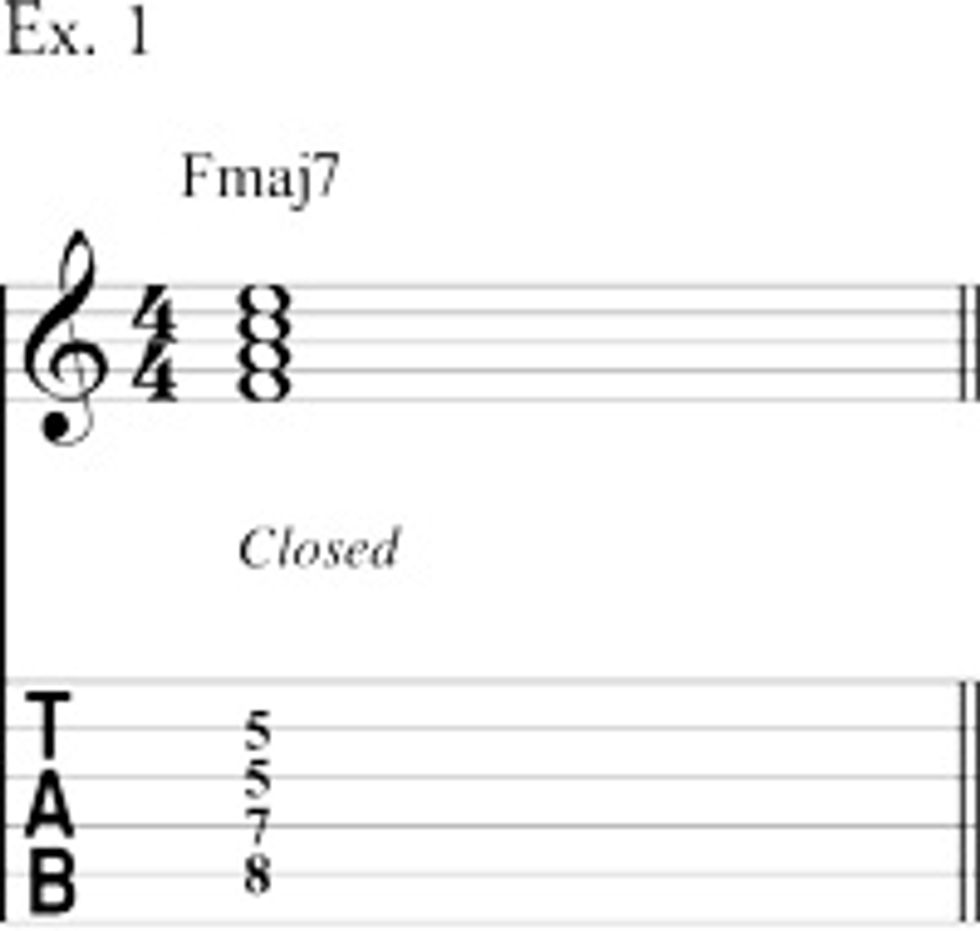
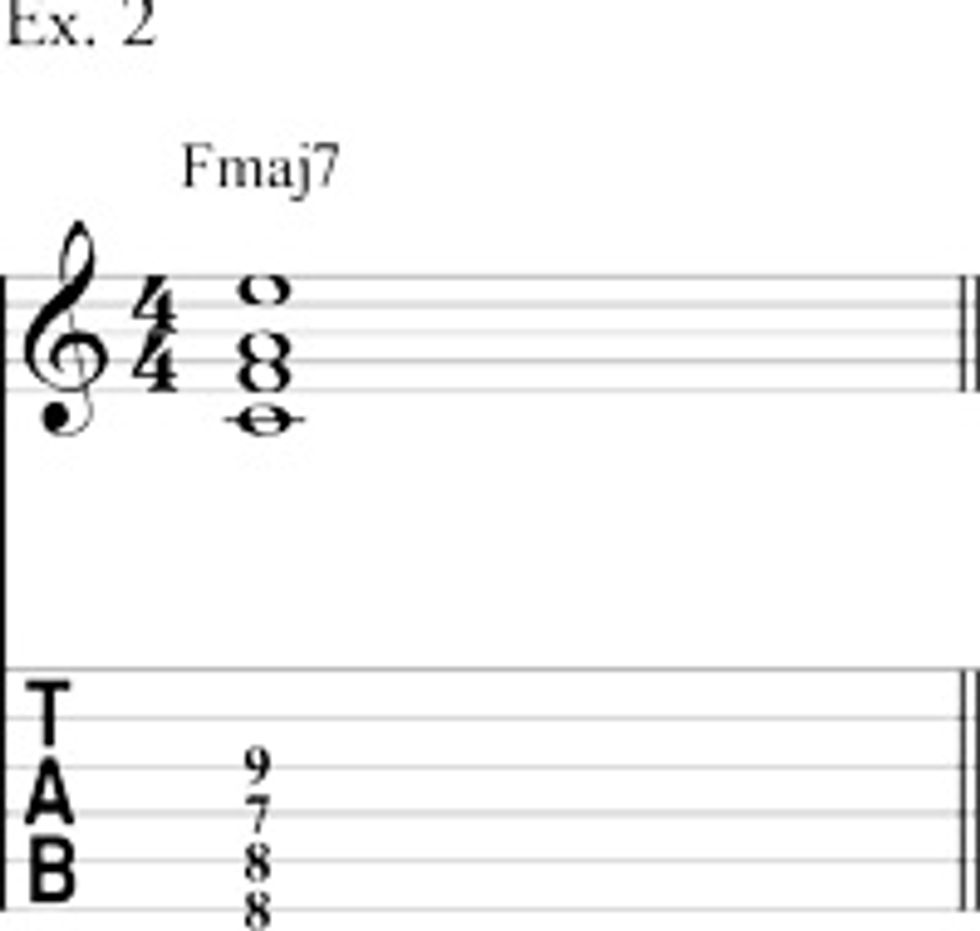
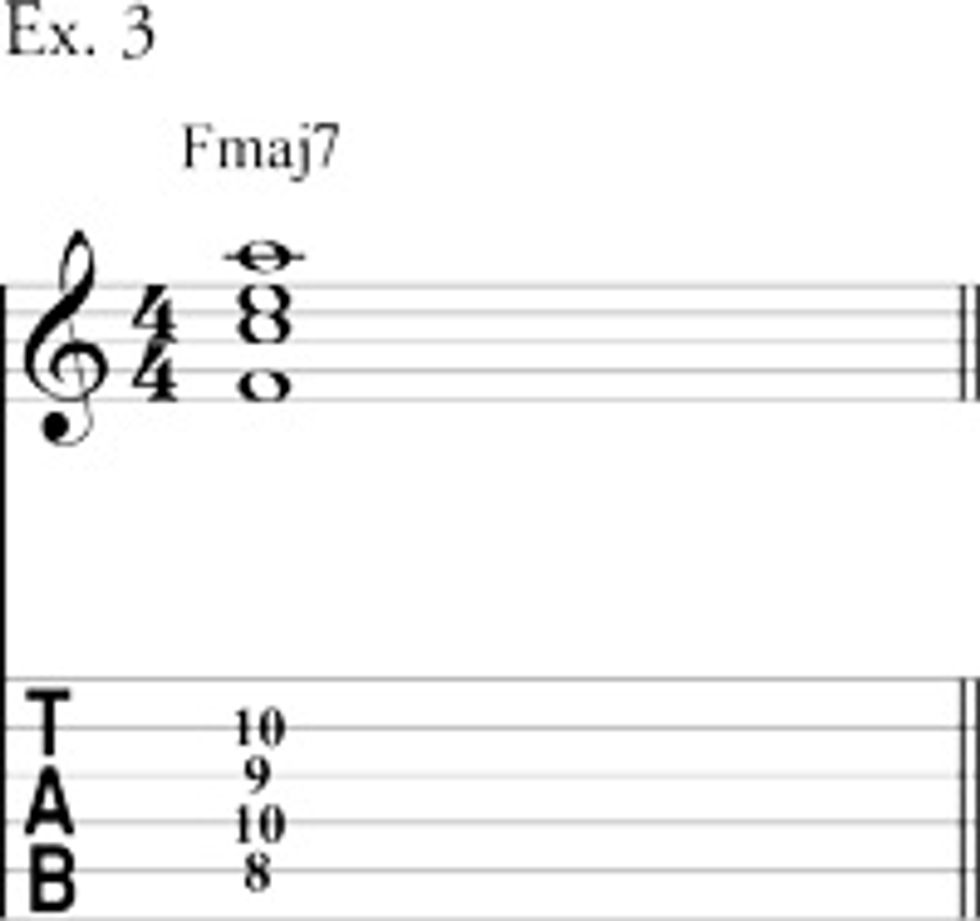

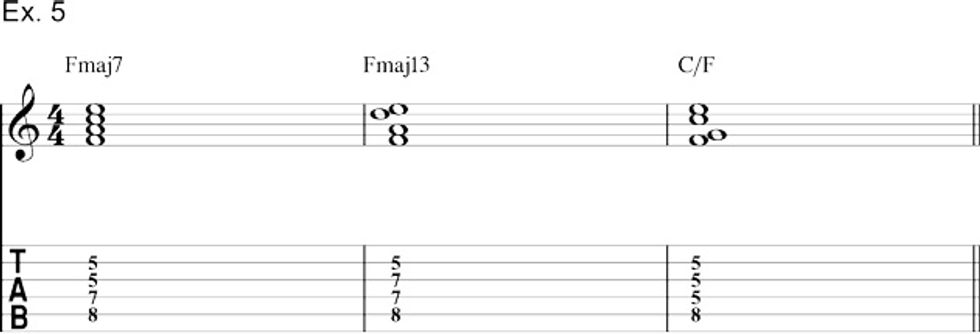



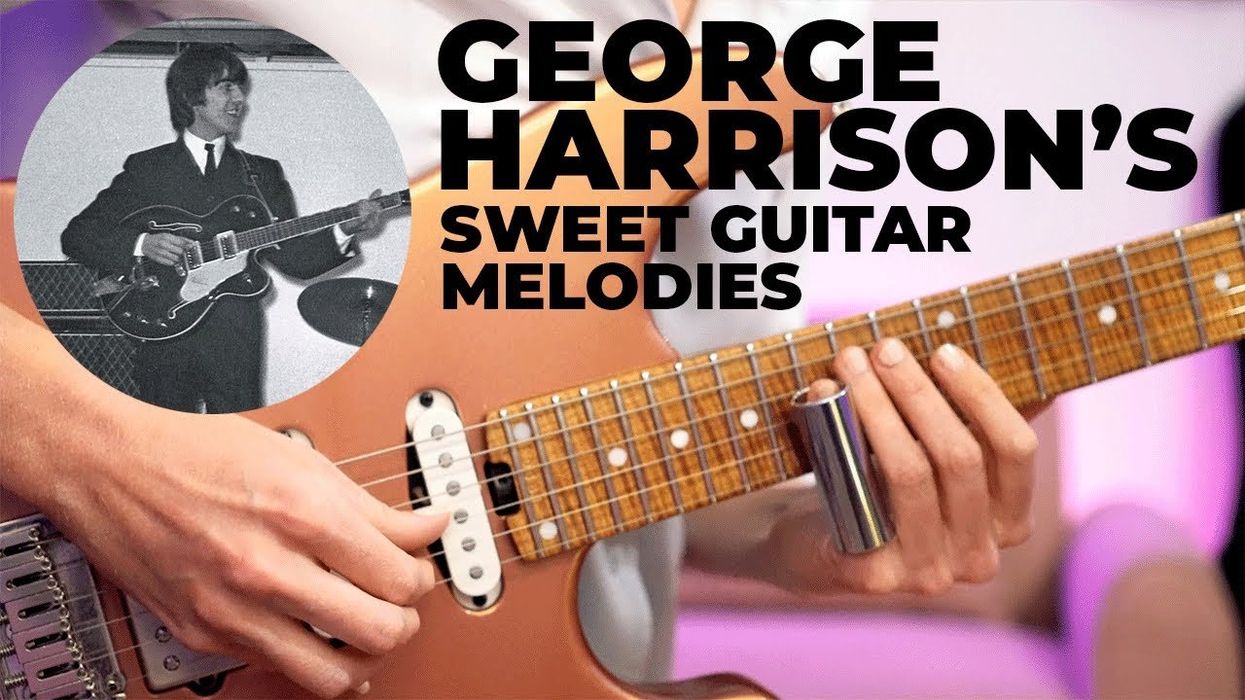




![Rig Rundown: Russian Circles’ Mike Sullivan [2025]](https://www.premierguitar.com/media-library/youtube.jpg?id=62303631&width=1245&height=700&quality=70&coordinates=0%2C0%2C0%2C0)



